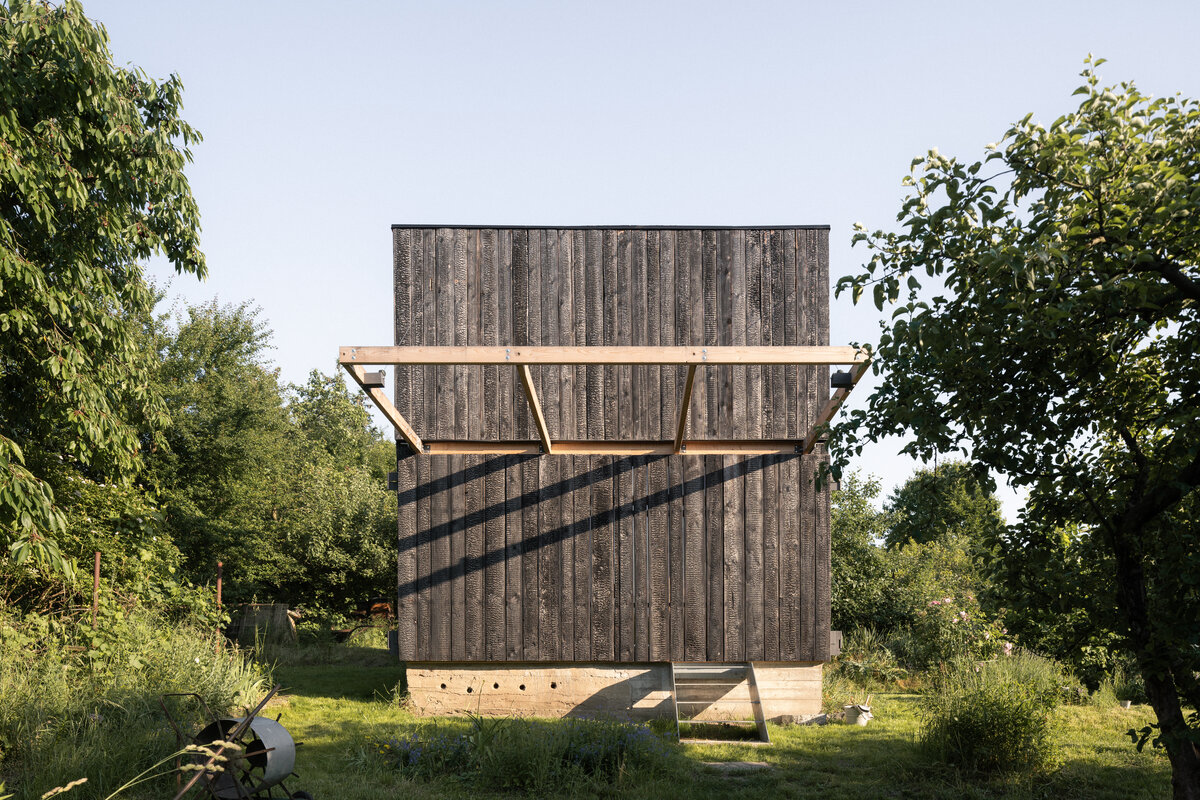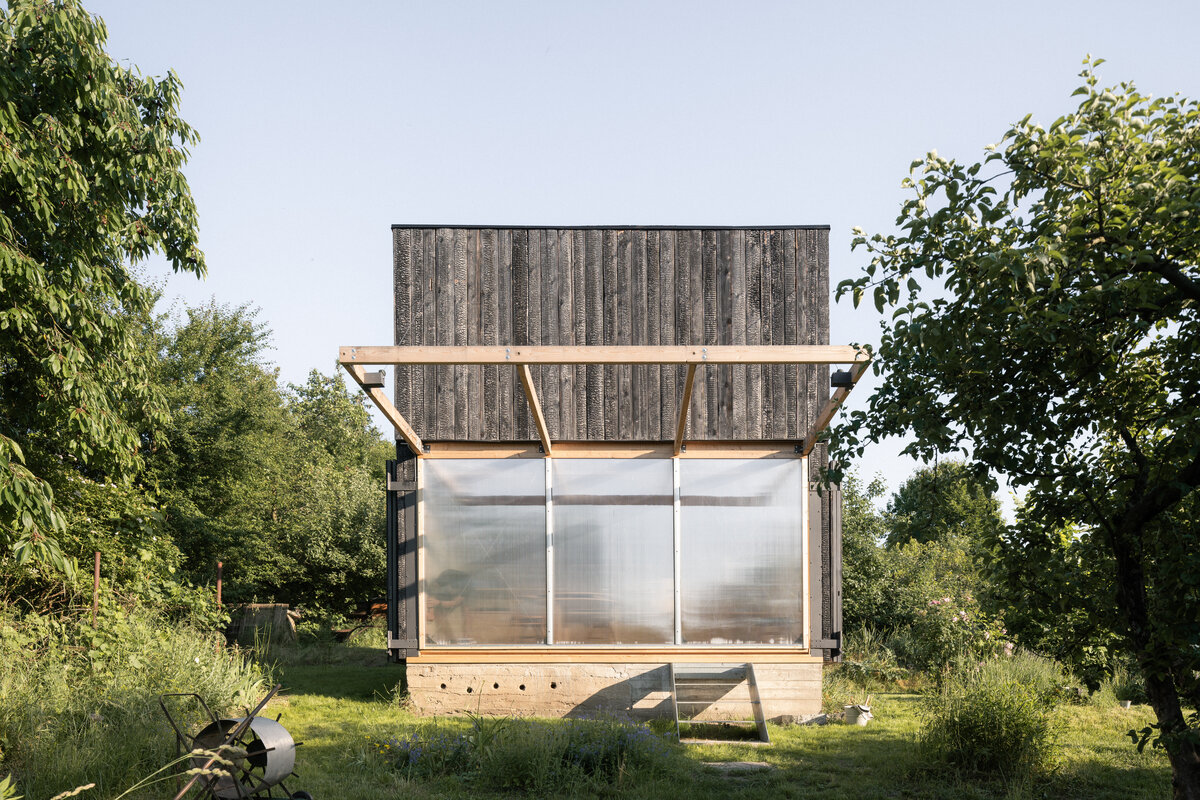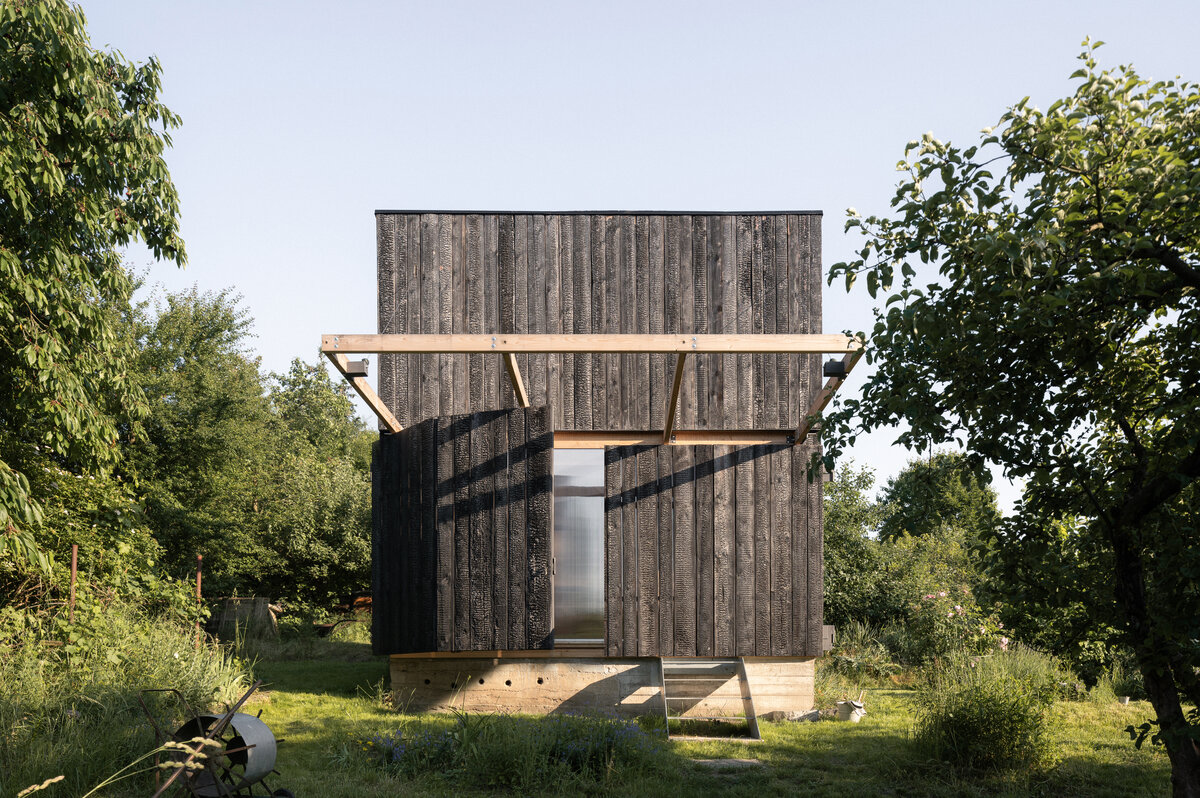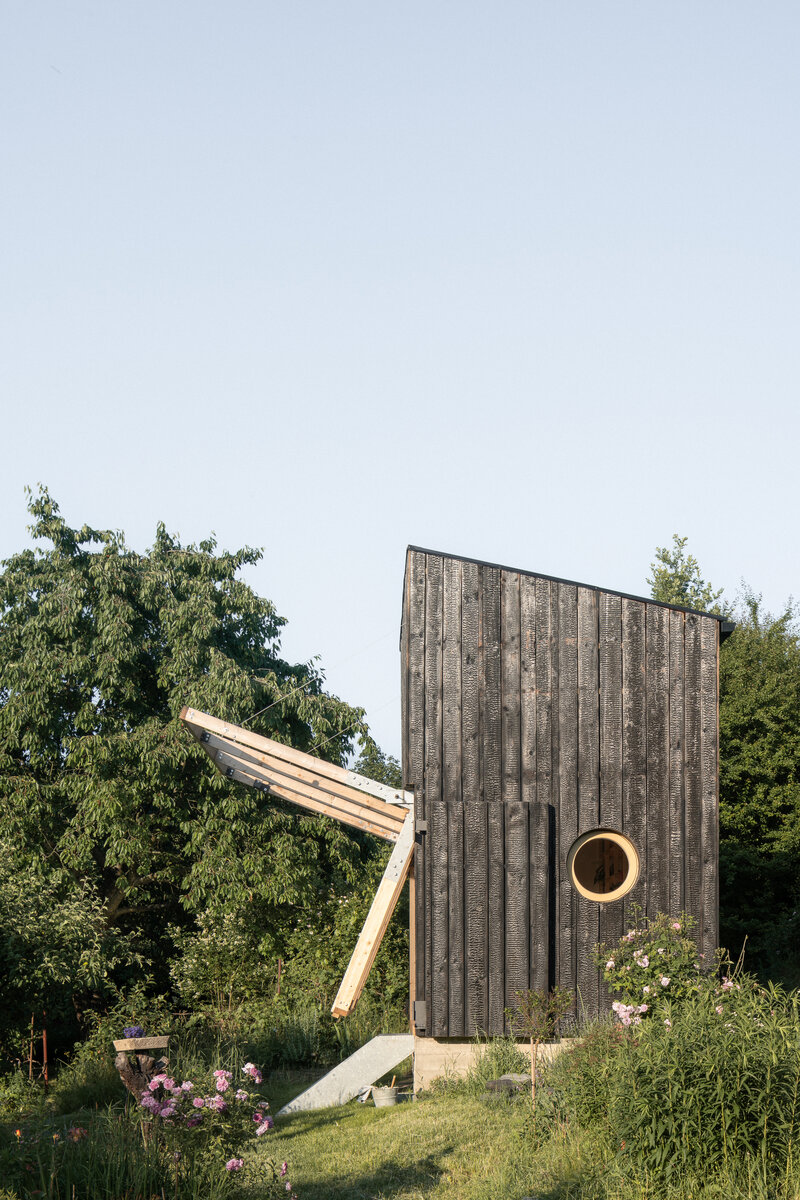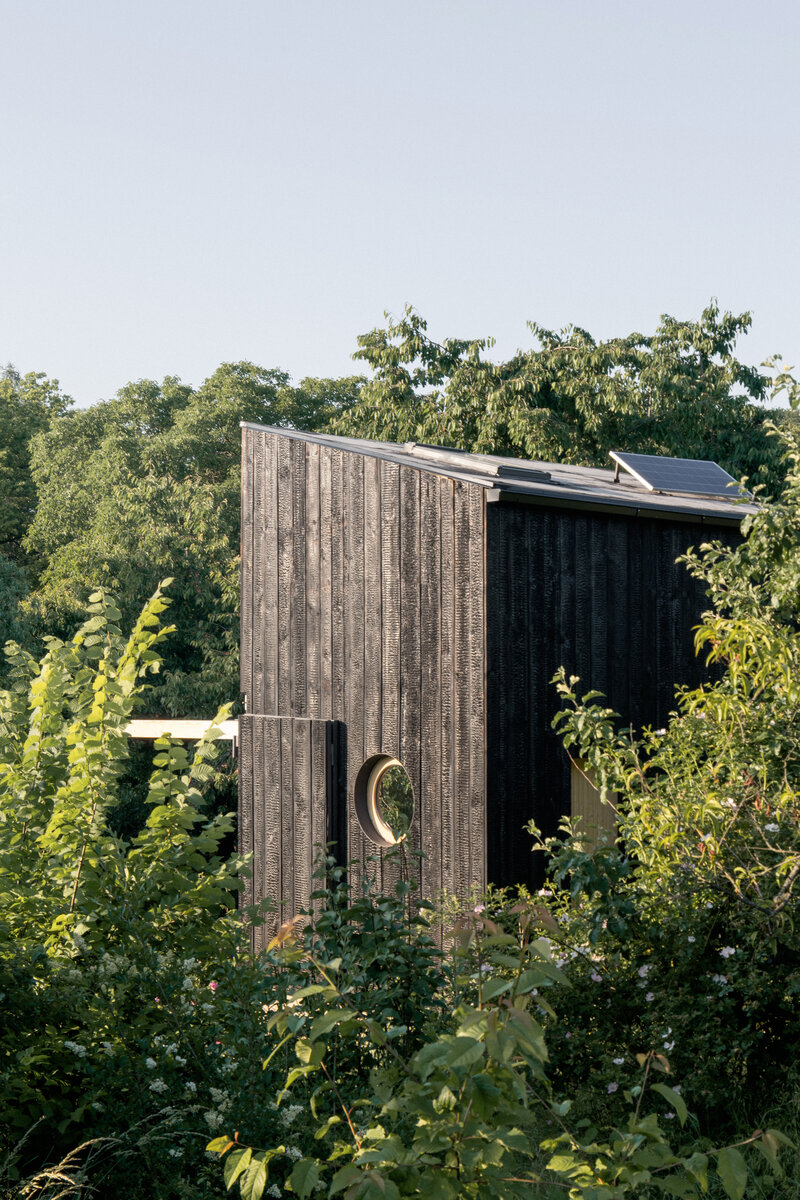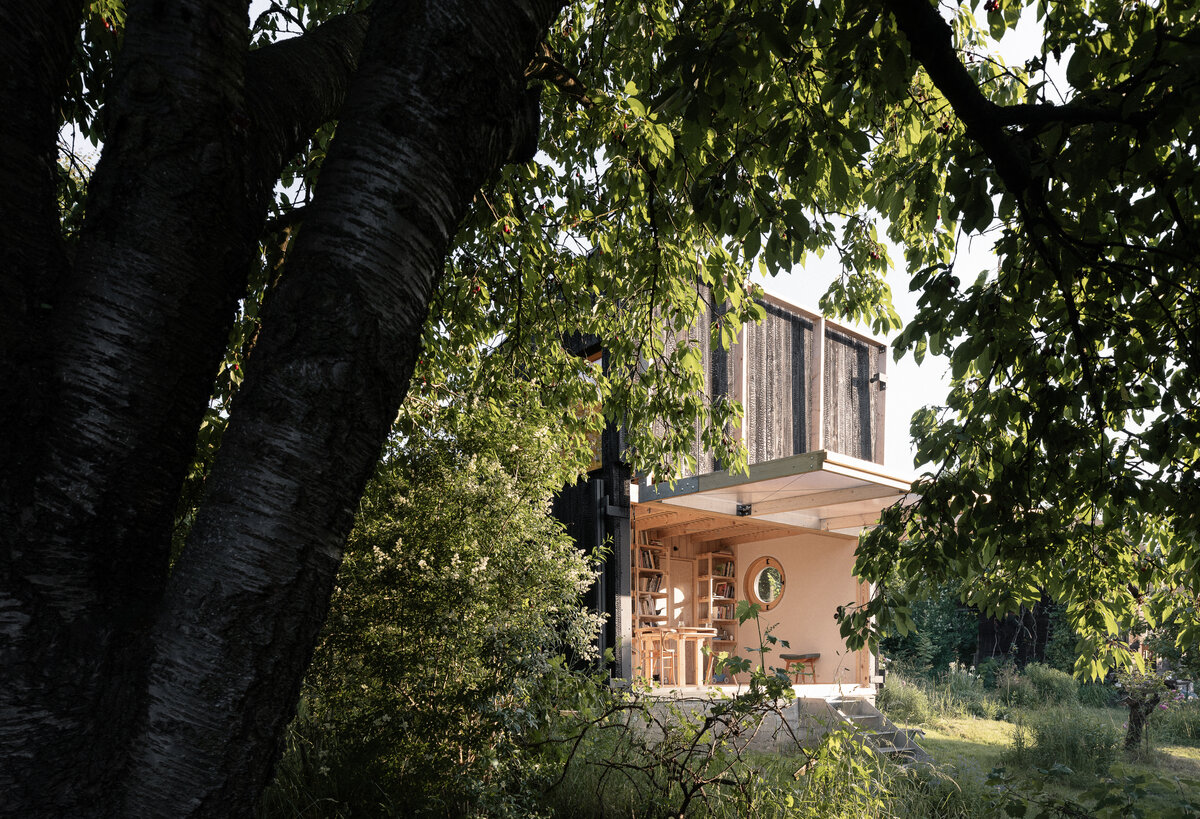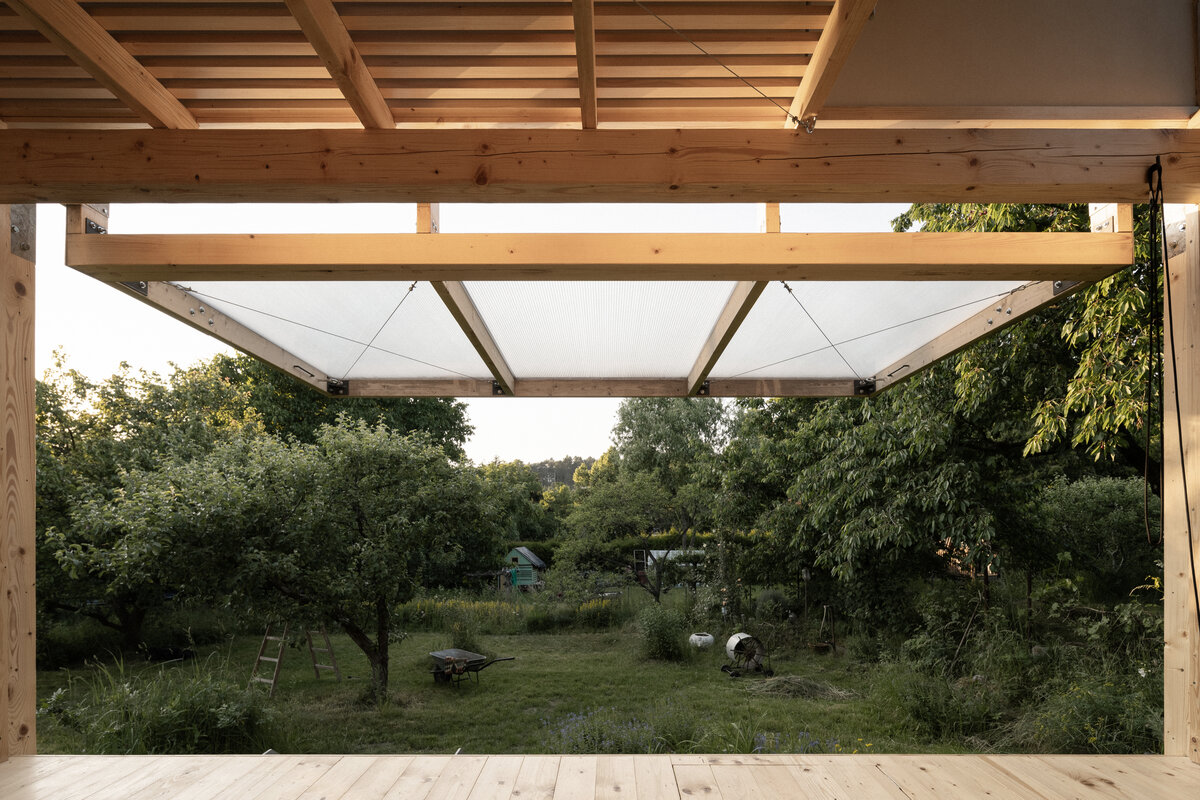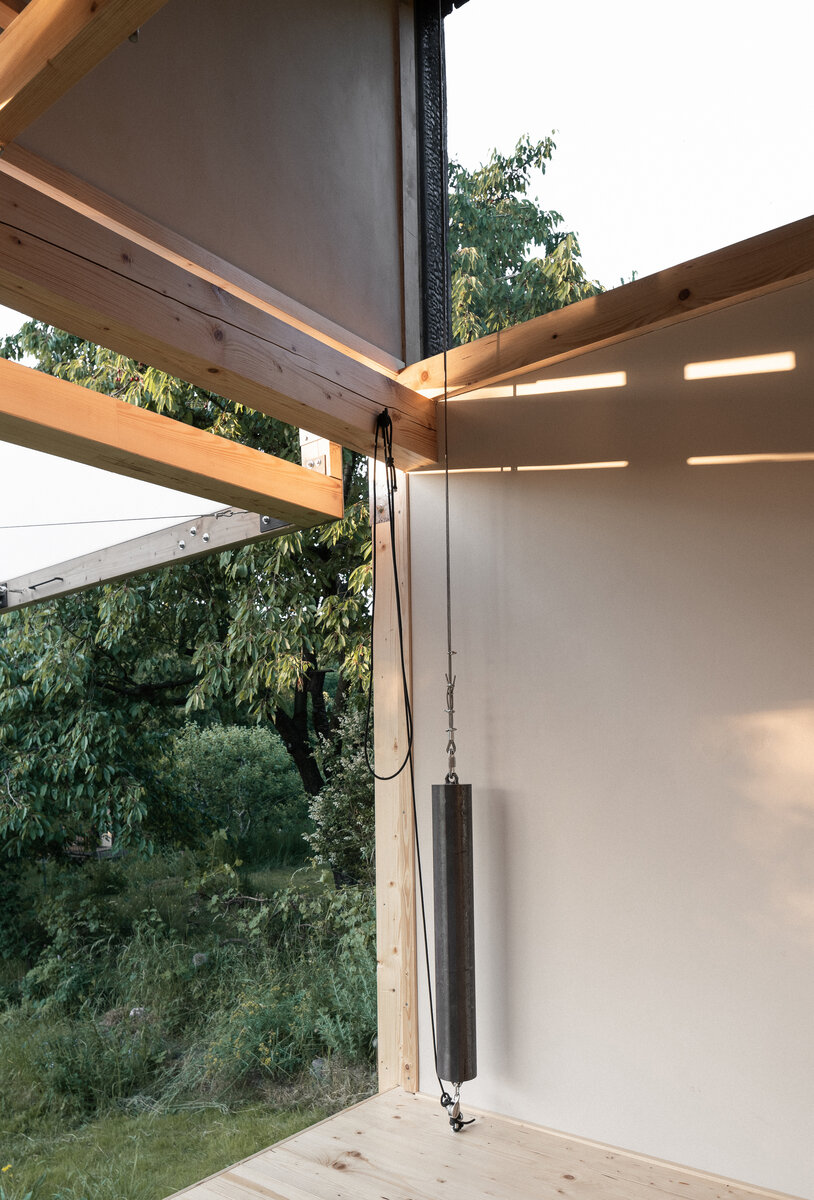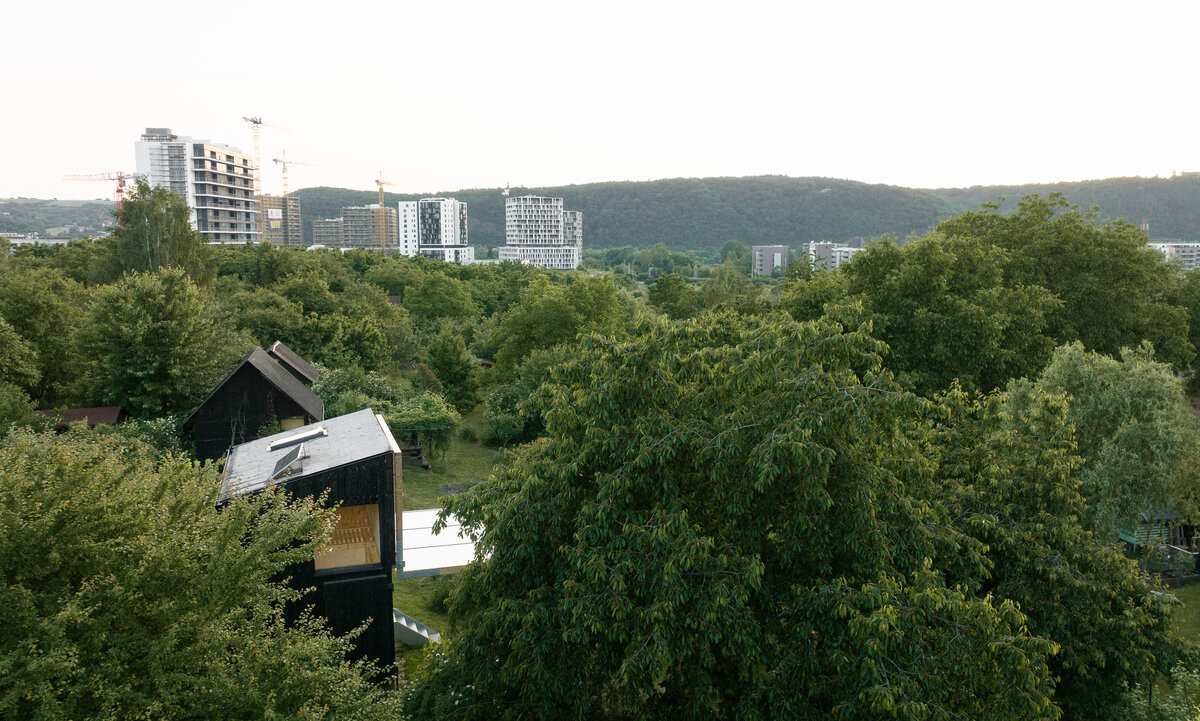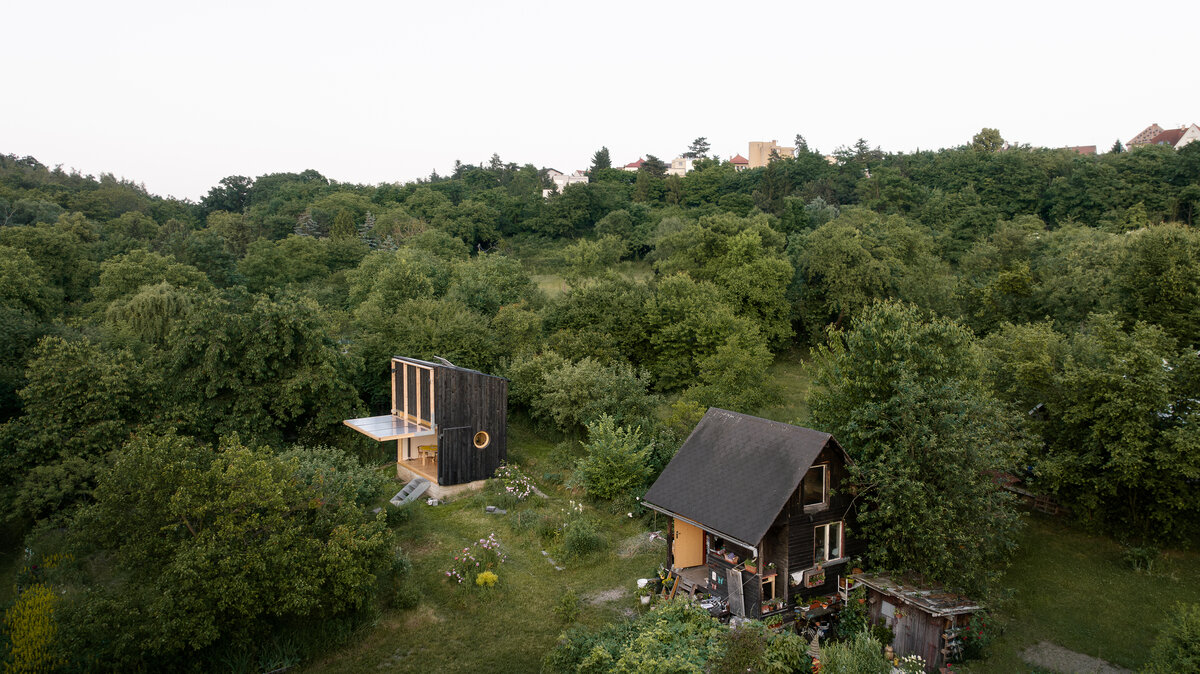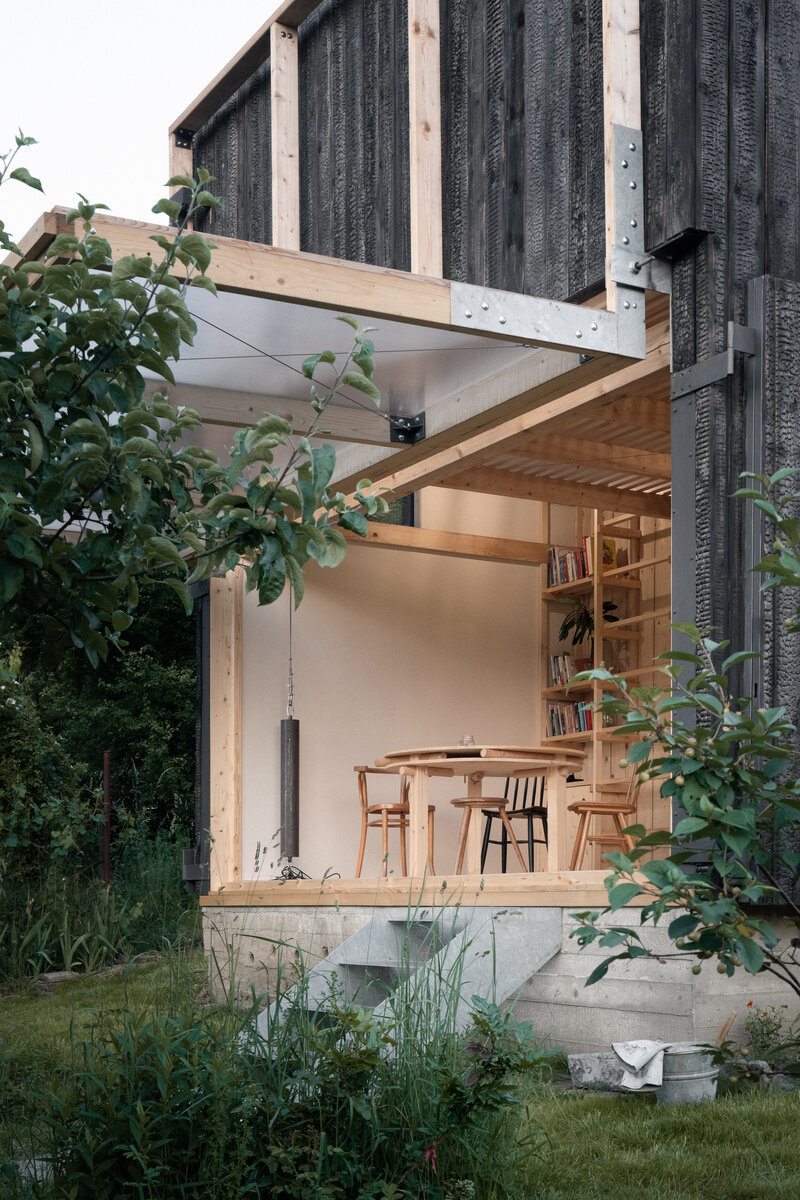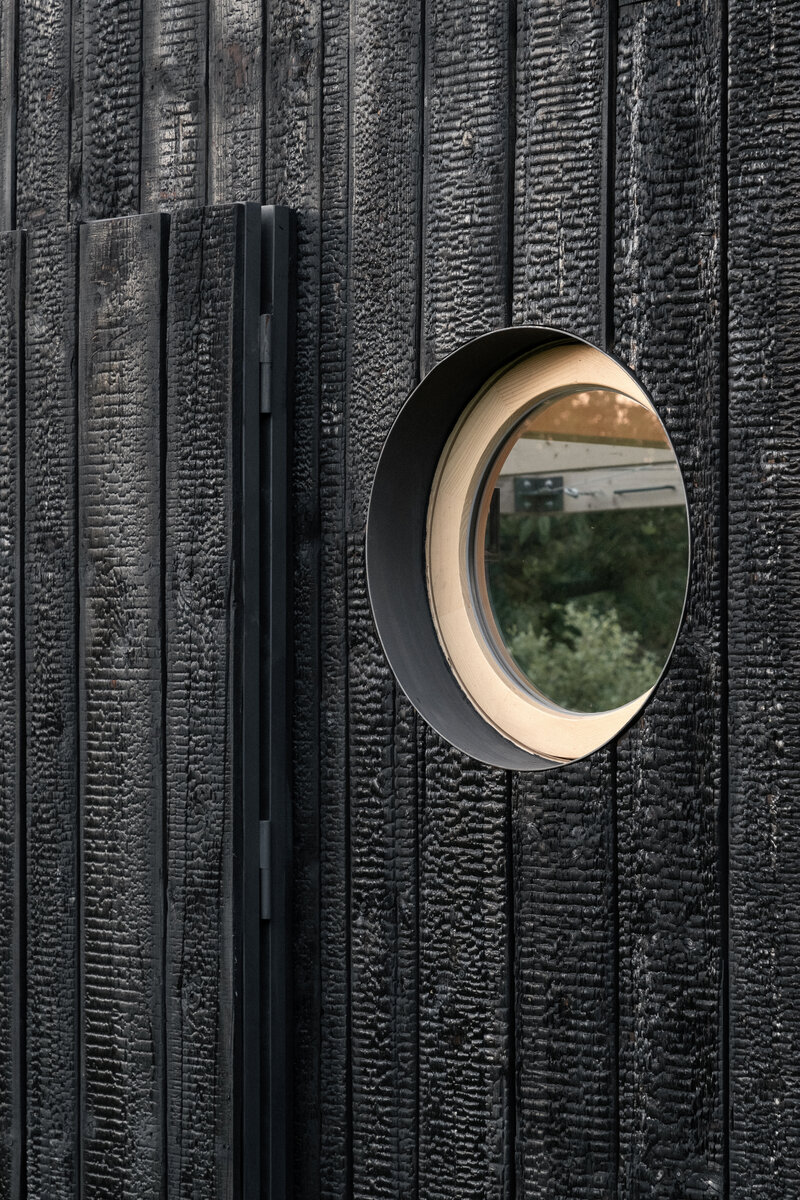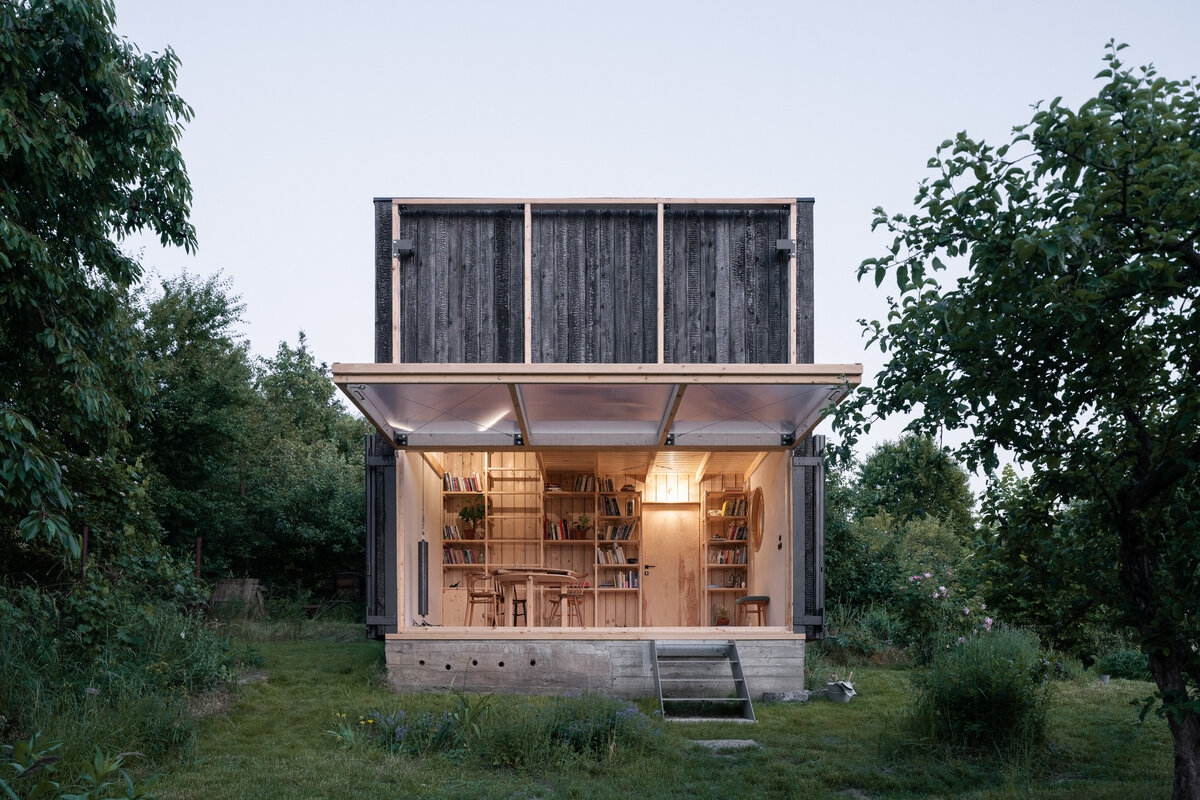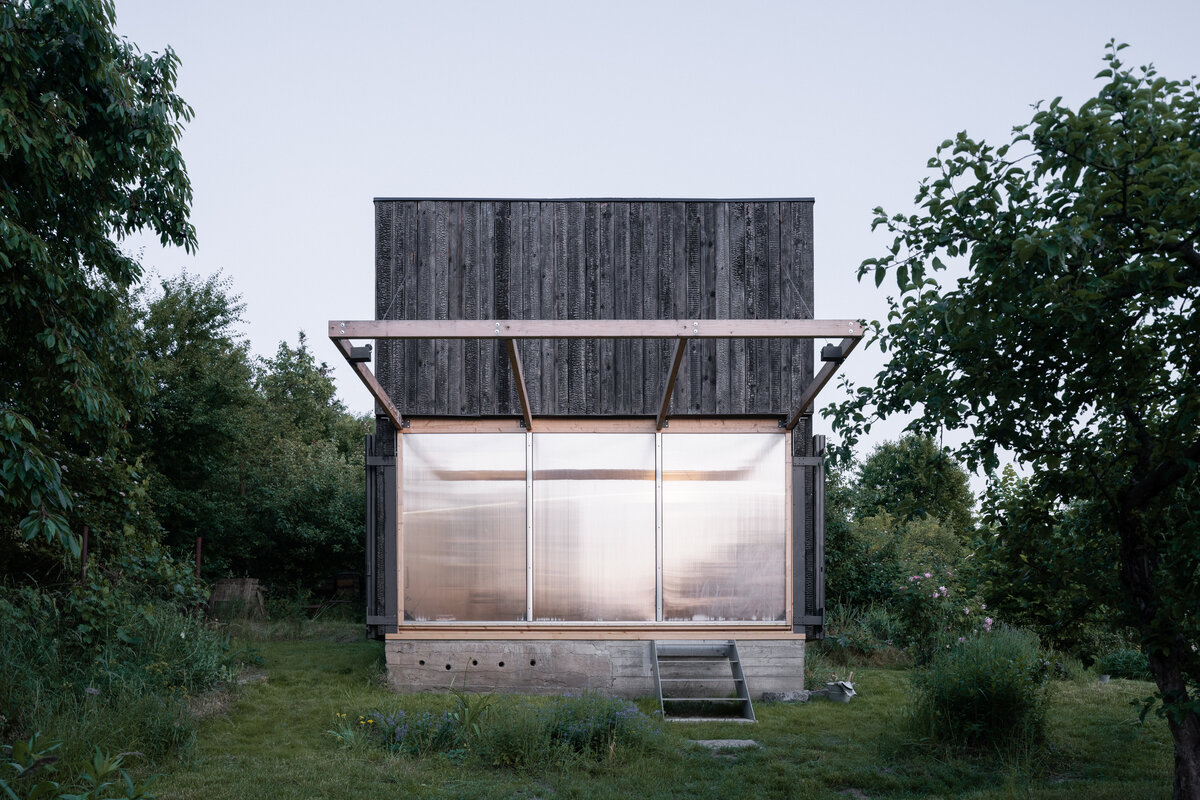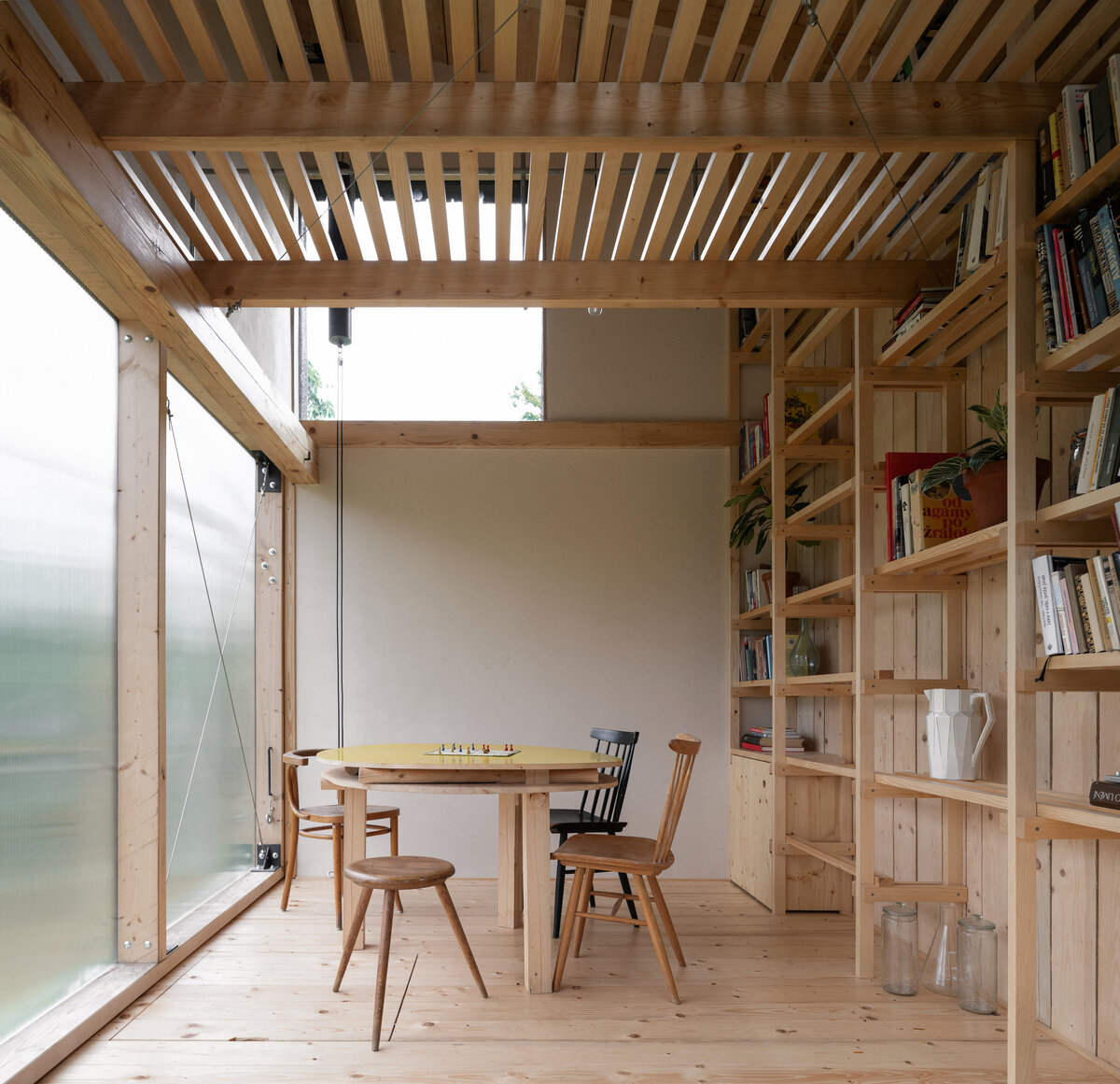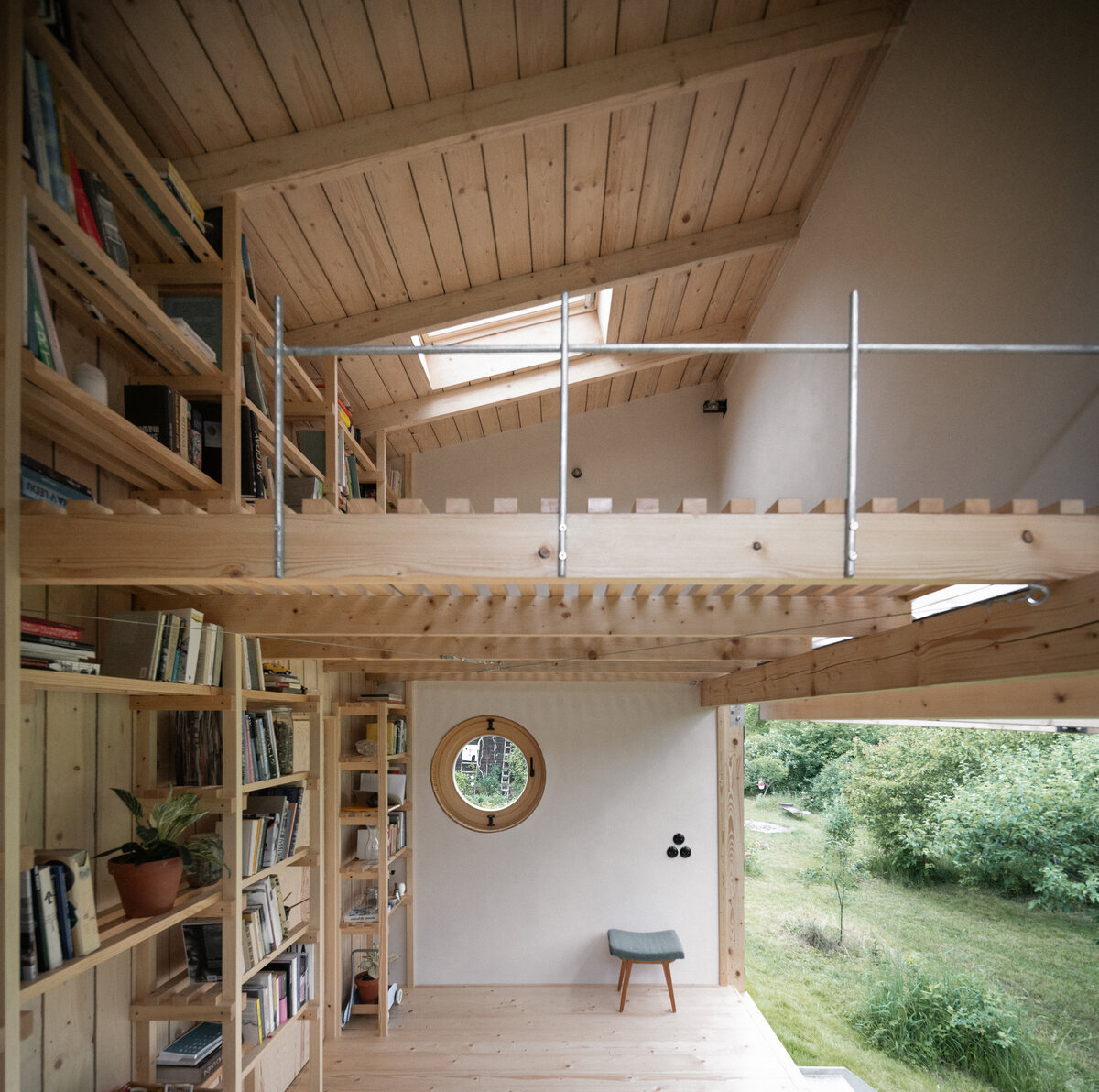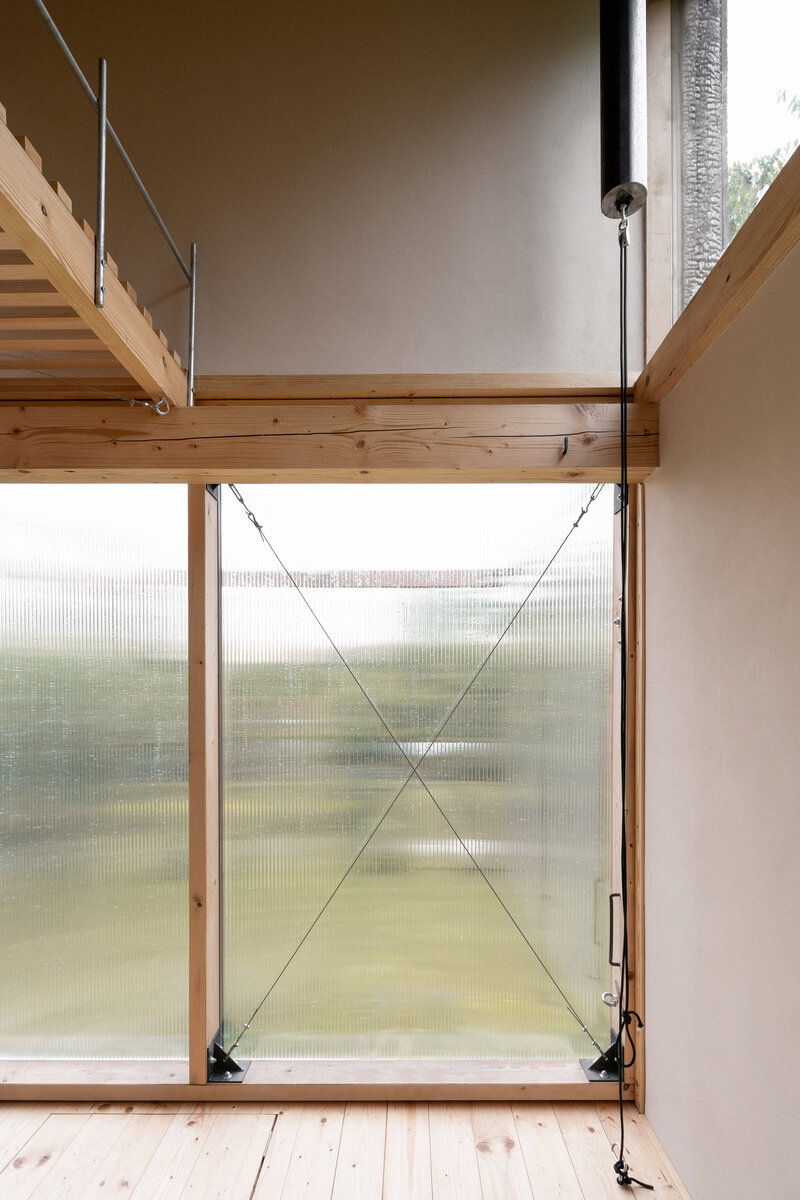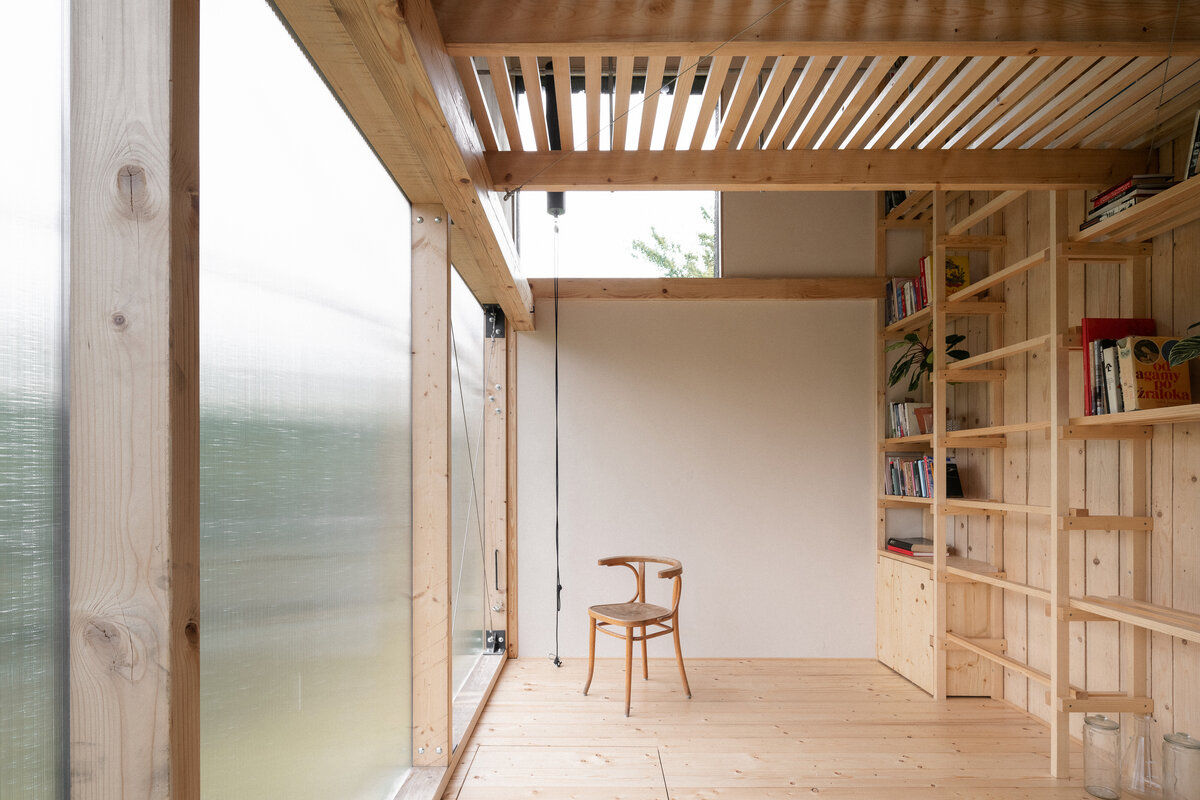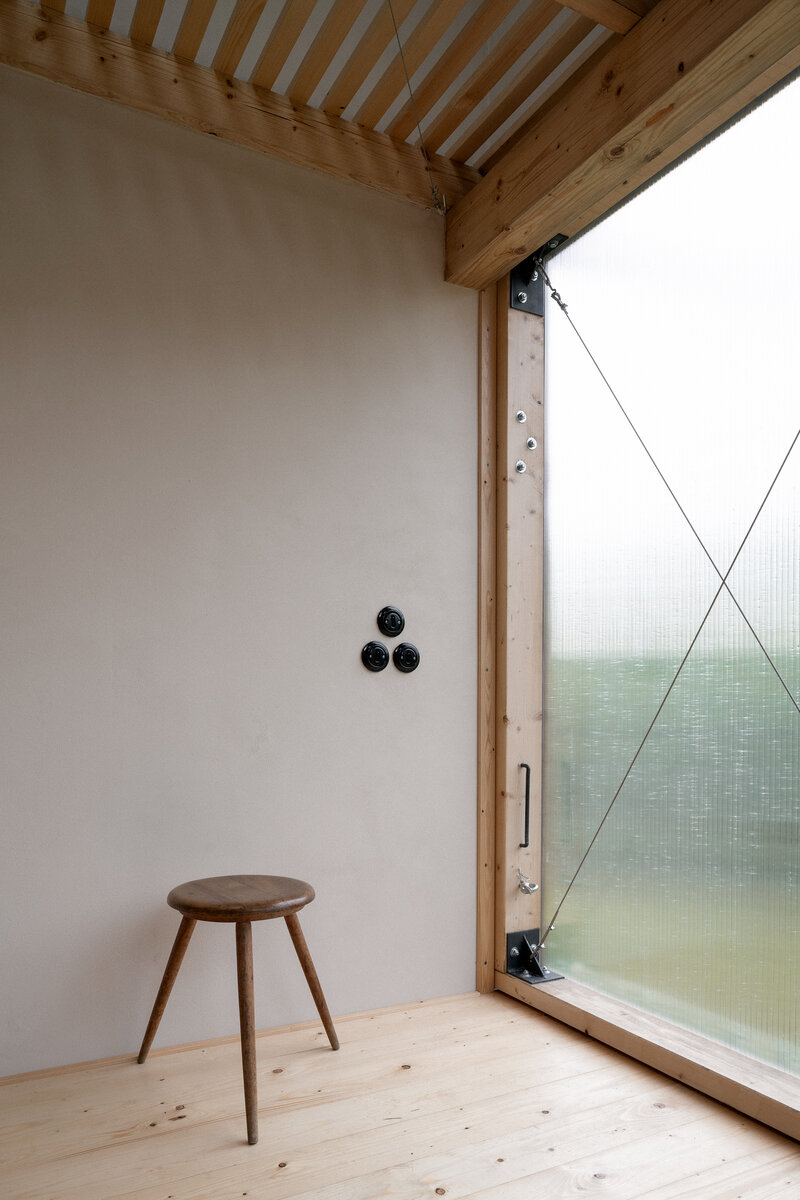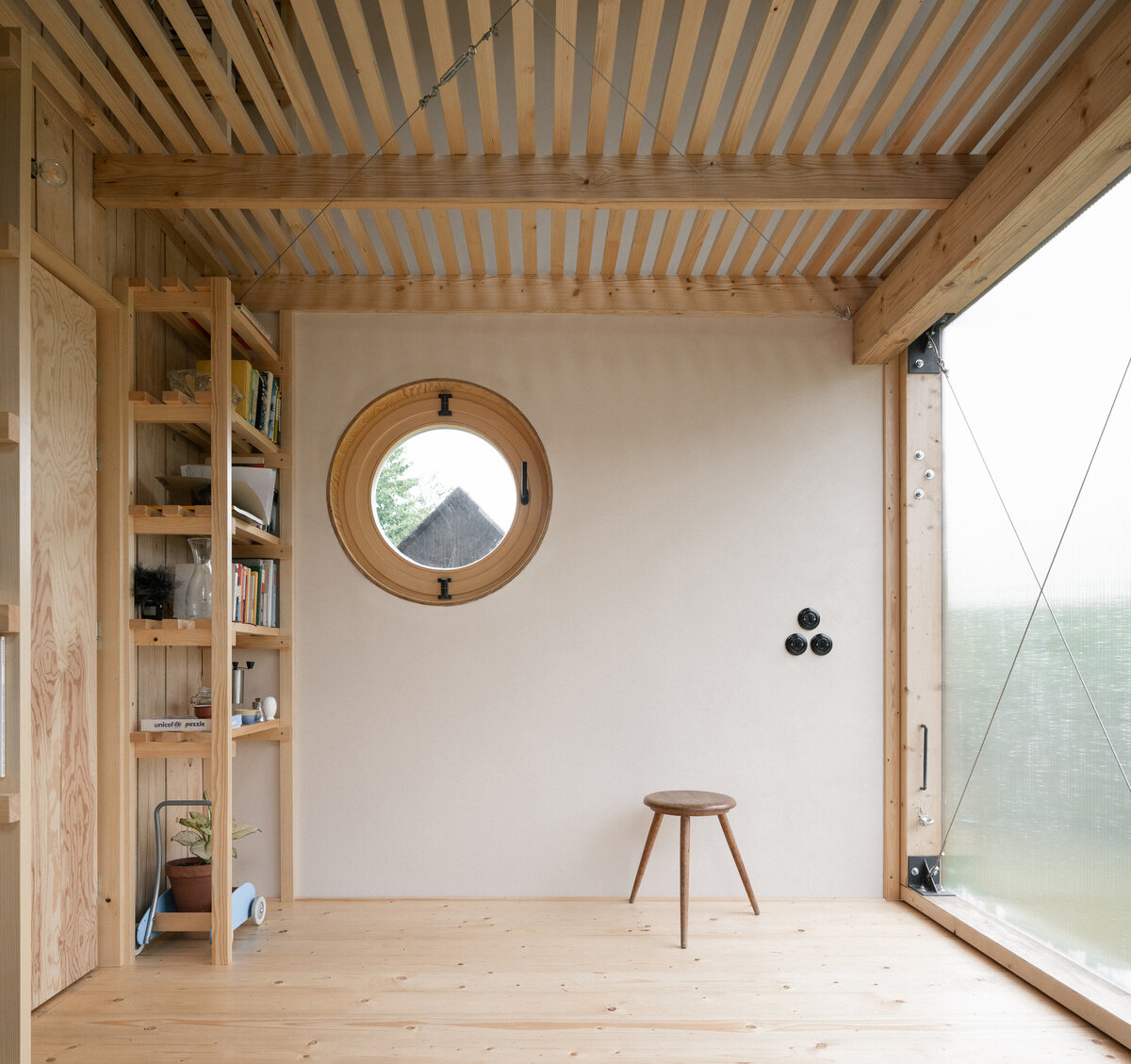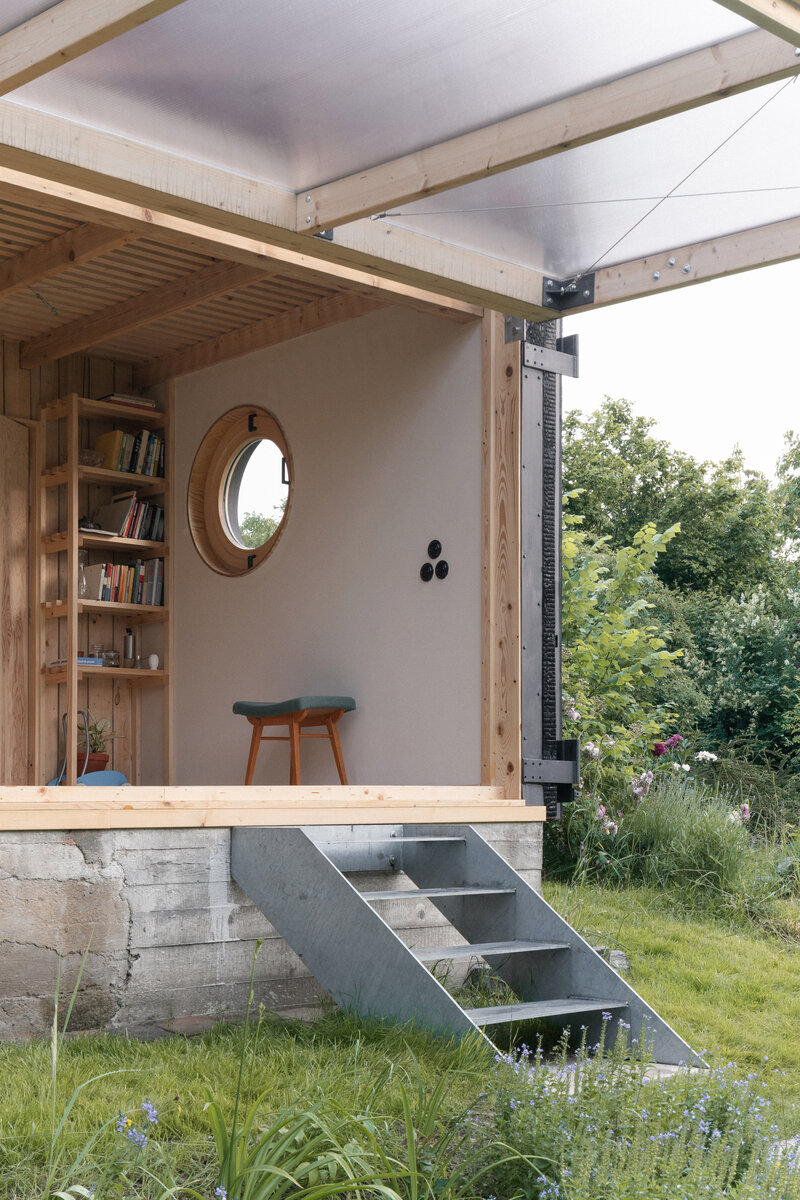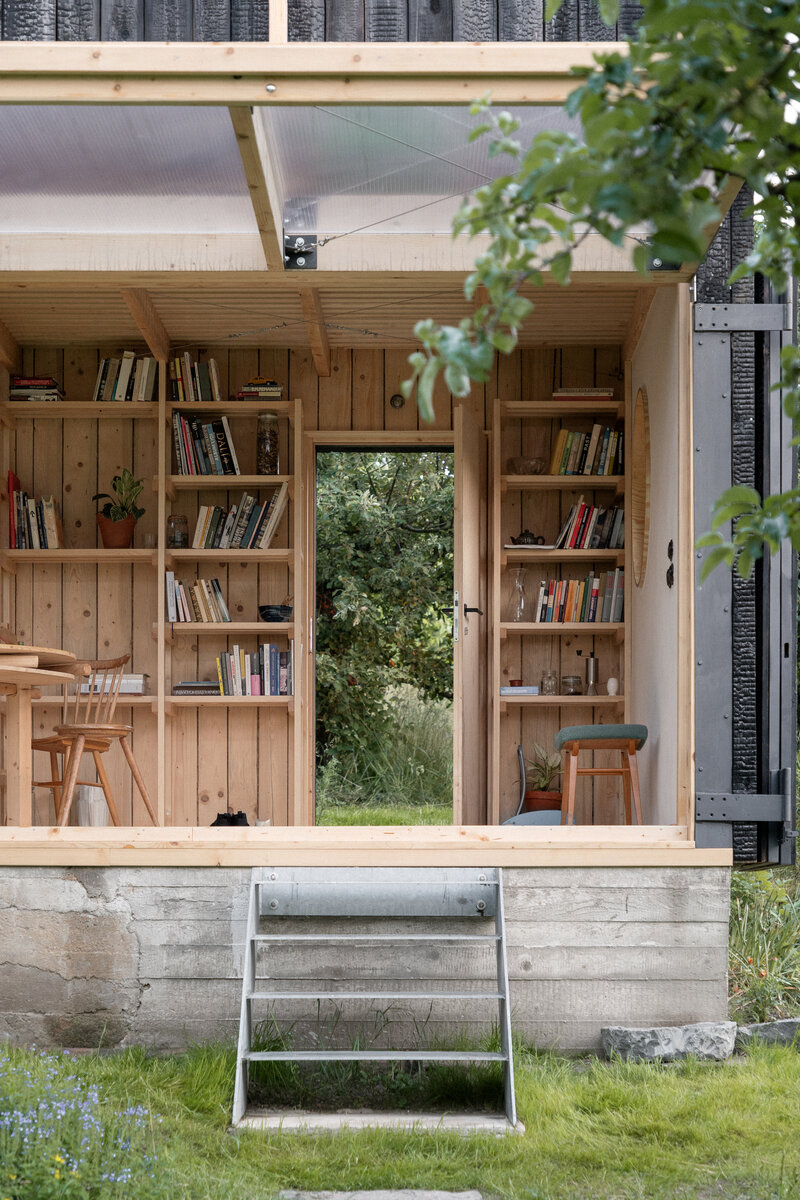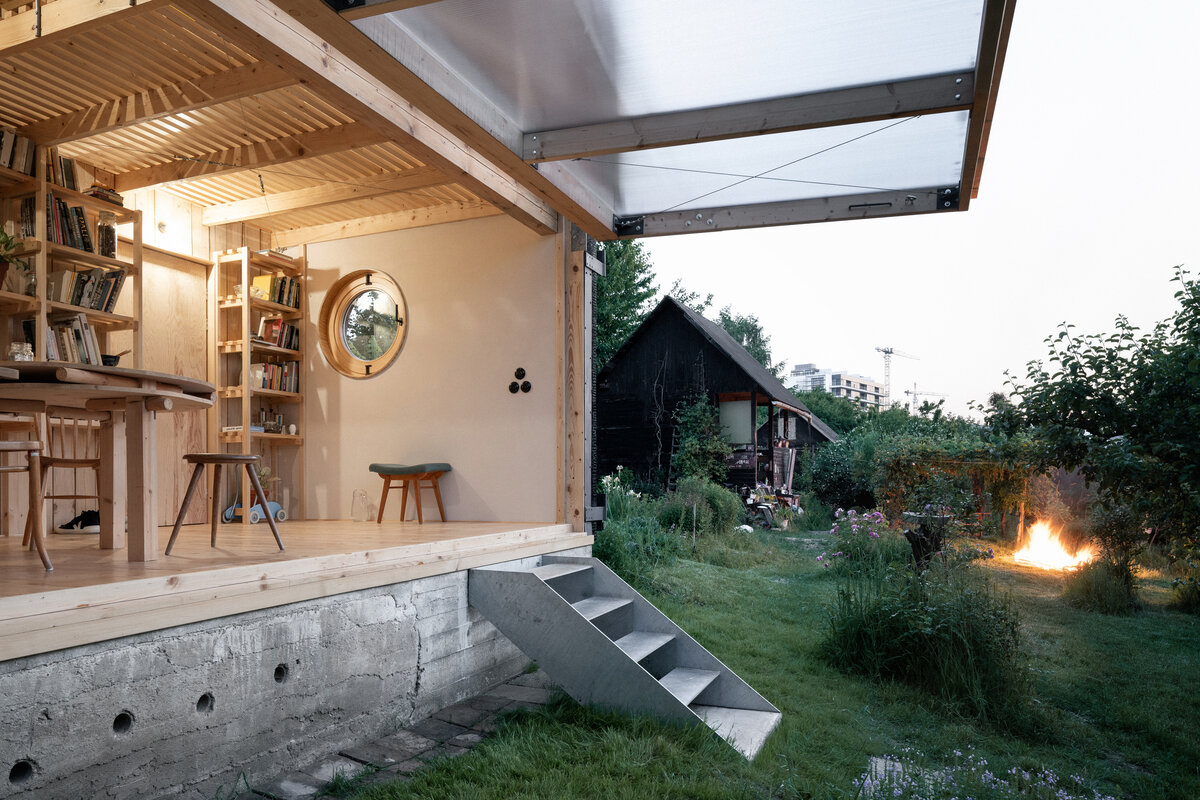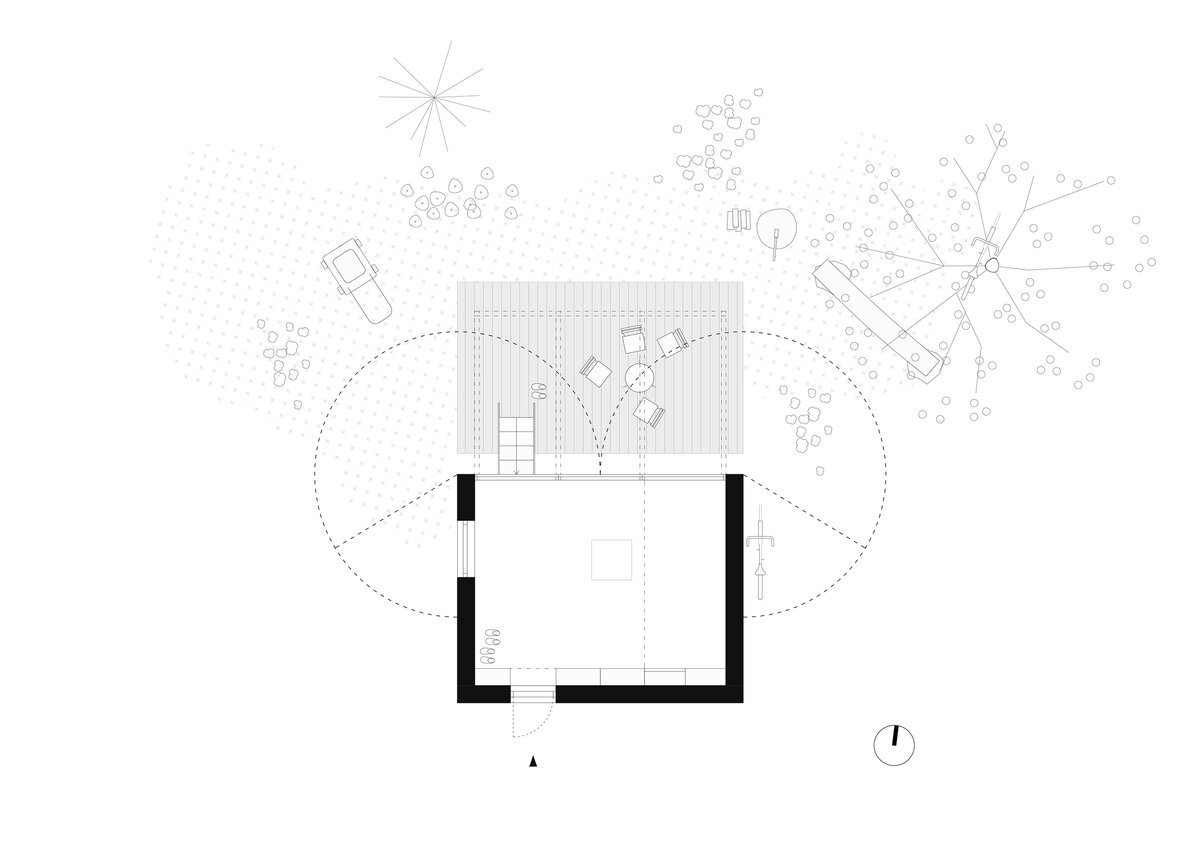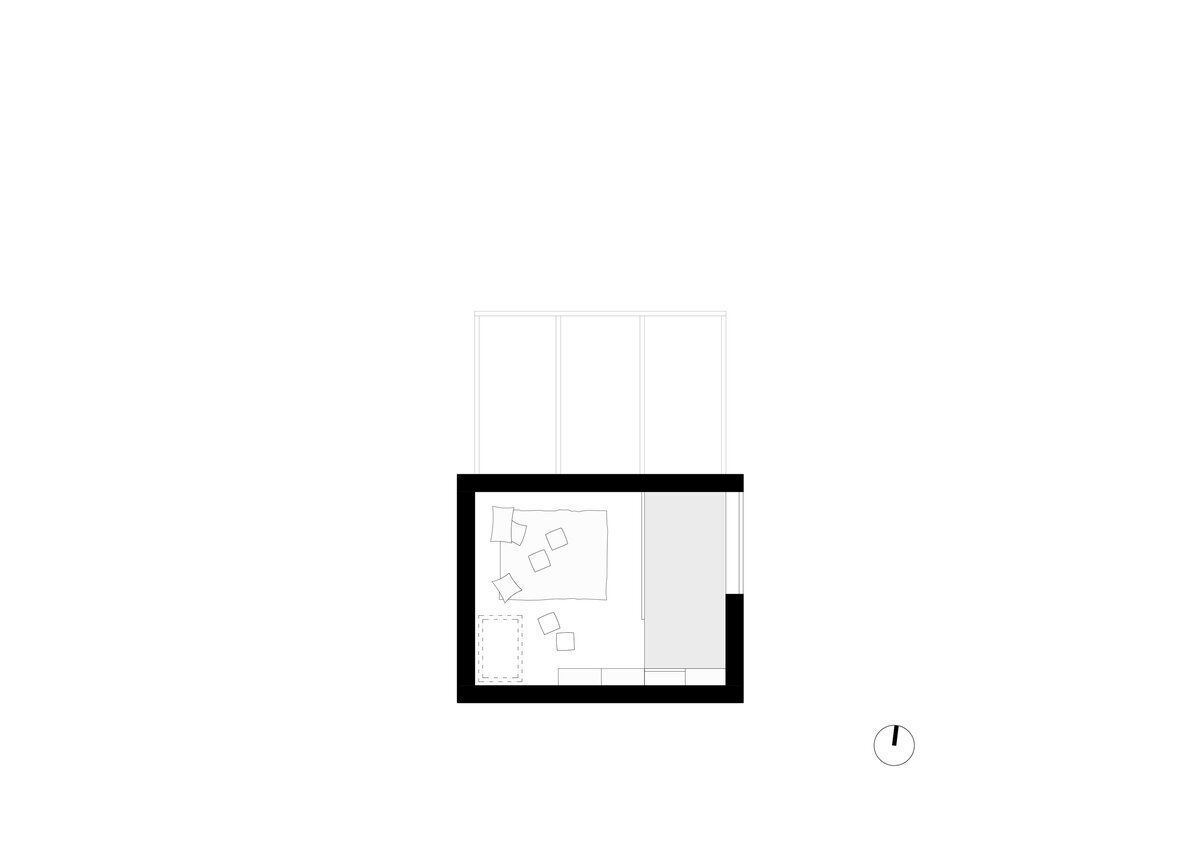| Author |
Jan Holub, Tomáš Hanus |
| Studio |
BYRÓ architekti |
| Location |
Praha |
| Collaborating professions |
x |
| Investor |
Tereza a Adam Petruskovi, Praha |
| Supplier |
x |
| Date of completion / approval of the project |
June 2023 |
| Fotograf |
Alex Shoot Buildings |
Clients for whom the garden pavilion is designed own a large mature garden in the middle of the city, which is also just a ten-minute walk from their apartment. When the clients are in their garden, they try to spend as much time outdoors as possible and came to us with a specific and perhaps slightly paradoxical task. They wanted a new structure on the site of the original dilapidated cottage, but at the same time, they didn't want to close off the garden. The building was supposed to offer only modest space, primarily in adverse weather, and allow for occasional overnight stays in the summer months. An additional function for the winter season was to provide a space for storing plants, somewhat resembling a winter garden.
We thought about how to connect the building as closely as possible to the surrounding garden, and we ultimately came up with the idea of a folding panel that allows one side of the house to completely open. This way, the interior seamlessly transitions to the outdoors, with the garden penetrating the building, creating a kind of paraphrase of a garden loggia, which was our fundamental architectural inspiration. When open, the polycarbonate wall also functions as an outdoor roof, expanding the covered space where one can stay during rainy weather. The panel folding mechanism consists of steel cables, pulleys, and counterweights, making it easy for one person to open the entire facade.
The garden pavilion is situated on the foundations of the original wooden cottage in a garden colony near the Vltava River. It is located in an environment where, in addition to the mature garden, there are greenhouses and arbors, along with several other small cottages that mostly serve as storage and facilities for individual gardens. These cottages are similar to each other, mostly dark, almost windowless, and possess a romantically imperfect and irregular quality. We tried to incorporate the character of the surroundings into the new building, which is made of dark, burnt wood (shou-sugi-ban technique) with a naturally irregular structure. With closed shutters, it corresponds to the quiet objects in the vicinity.
The building is designed as a wooden structure in a two-by-four construction system. The interior walls are plastered, the rear wall with an integrated bookshelf and a ladder leading to the upper floor is lined with wood. The construction of the library and the upper floor is made of wooden slats to create a subtle interior that allows natural light to filter through. Thanks to windows oriented in three directions combined with the polycarbonate panel, the lighting mood inside the building changes during the day, and even when closed, the interior space does not feel cramped. The floor plan dimensions are minimal – 3x5m, and the height of the building is just under 5m. The building is not connected to any utility networks and has only its own photovoltaic panel, which covers the basic electricity consumption in the building and provides lighting.
Green building
Environmental certification
| Type and level of certificate |
-
|
Water management
| Is rainwater used for irrigation? |
|
| Is rainwater used for other purposes, e.g. toilet flushing ? |
|
| Does the building have a green roof / facade ? |
|
| Is reclaimed waste water used, e.g. from showers and sinks ? |
|
The quality of the indoor environment
| Is clean air supply automated ? |
|
| Is comfortable temperature during summer and winter automated? |
|
| Is natural lighting guaranteed in all living areas? |
|
| Is artificial lighting automated? |
|
| Is acoustic comfort, specifically reverberation time, guaranteed? |
|
| Does the layout solution include zoning and ergonomics elements? |
|
Principles of circular economics
| Does the project use recycled materials? |
|
| Does the project use recyclable materials? |
|
| Are materials with a documented Environmental Product Declaration (EPD) promoted in the project? |
|
| Are other sustainability certifications used for materials and elements? |
|
Energy efficiency
| Energy performance class of the building according to the Energy Performance Certificate of the building |
C
|
| Is efficient energy management (measurement and regular analysis of consumption data) considered? |
|
| Are renewable sources of energy used, e.g. solar system, photovoltaics? |
|
Interconnection with surroundings
| Does the project enable the easy use of public transport? |
|
| Does the project support the use of alternative modes of transport, e.g cycling, walking etc. ? |
|
| Is there access to recreational natural areas, e.g. parks, in the immediate vicinity of the building? |
|
